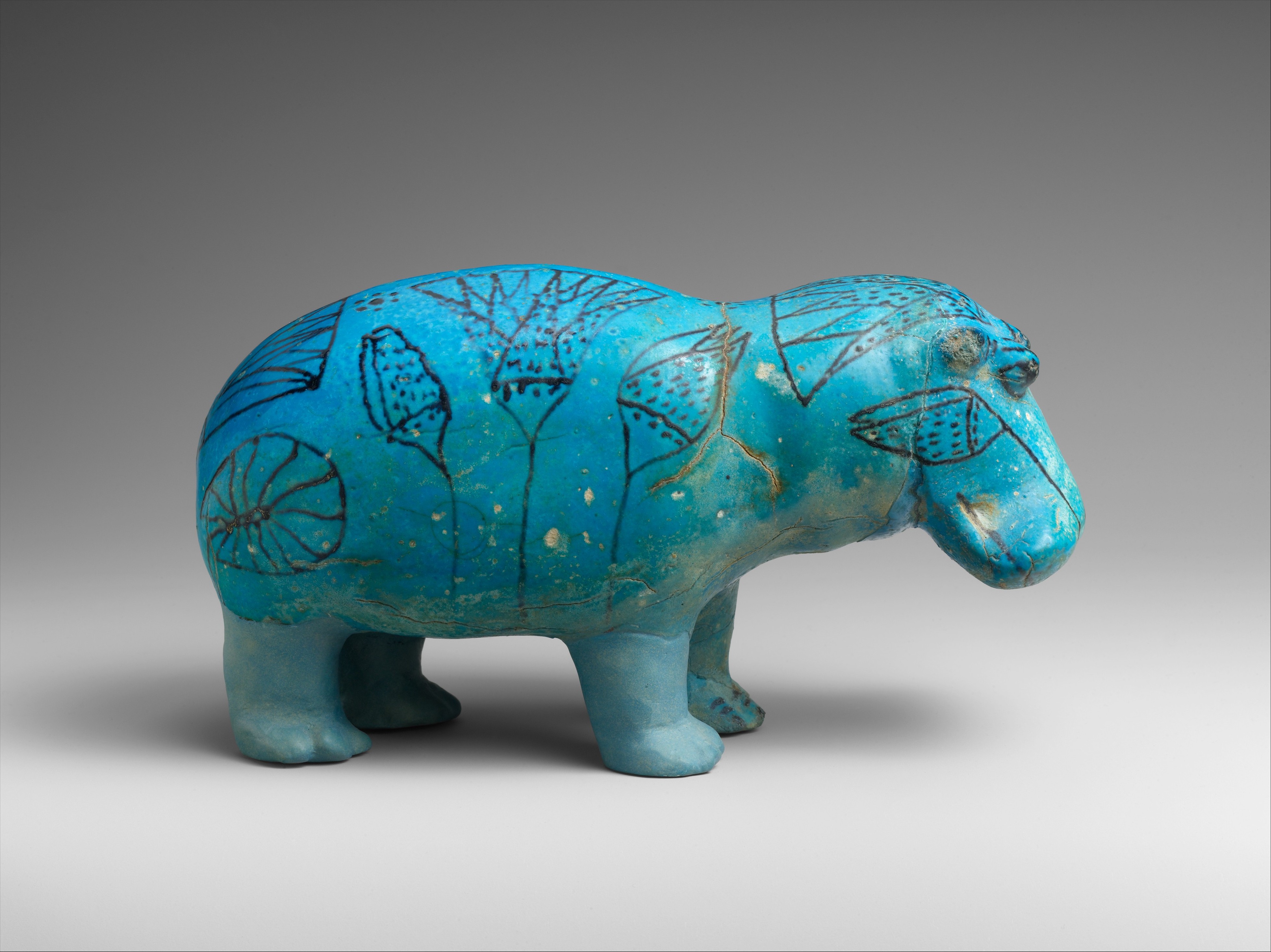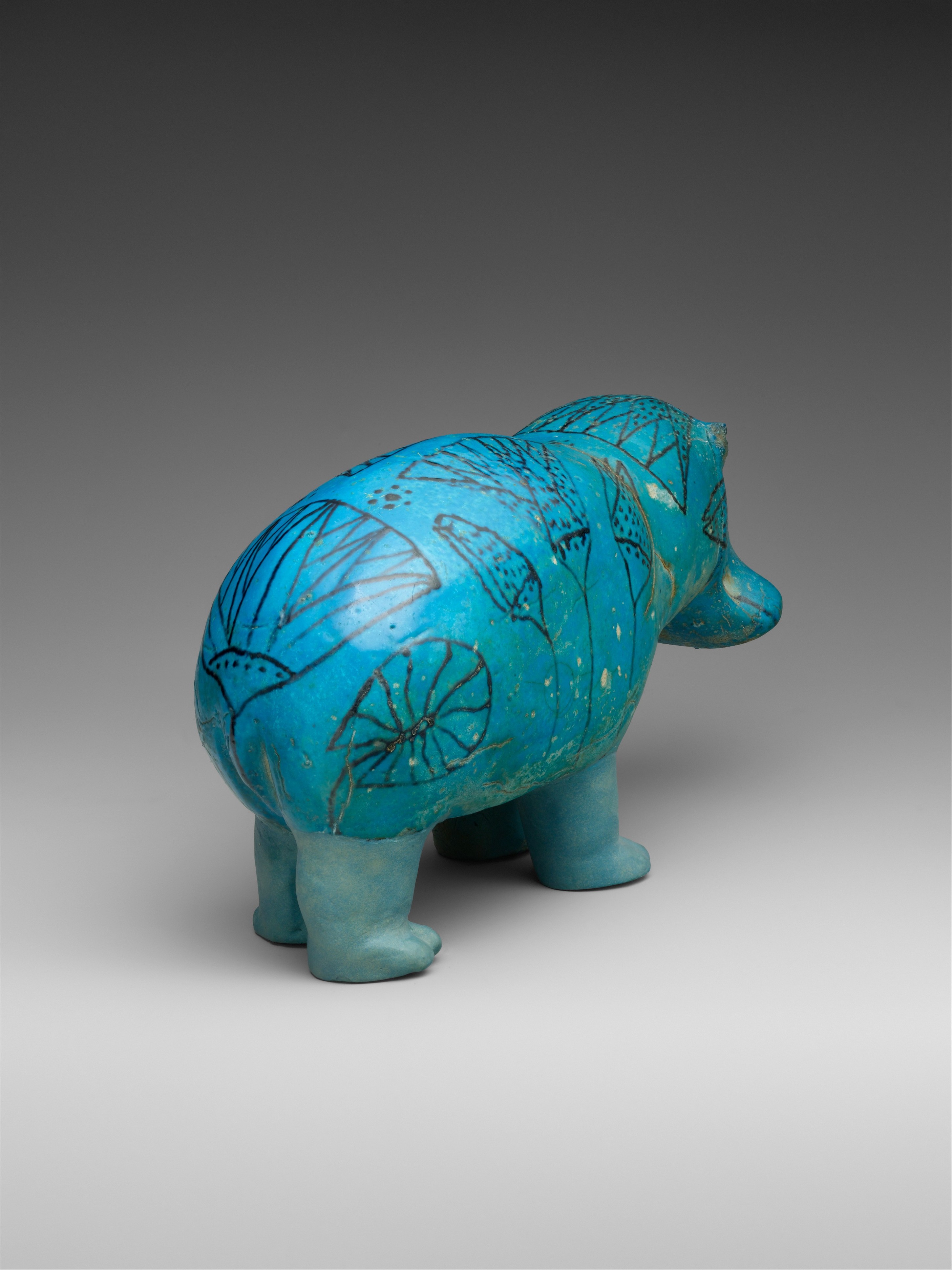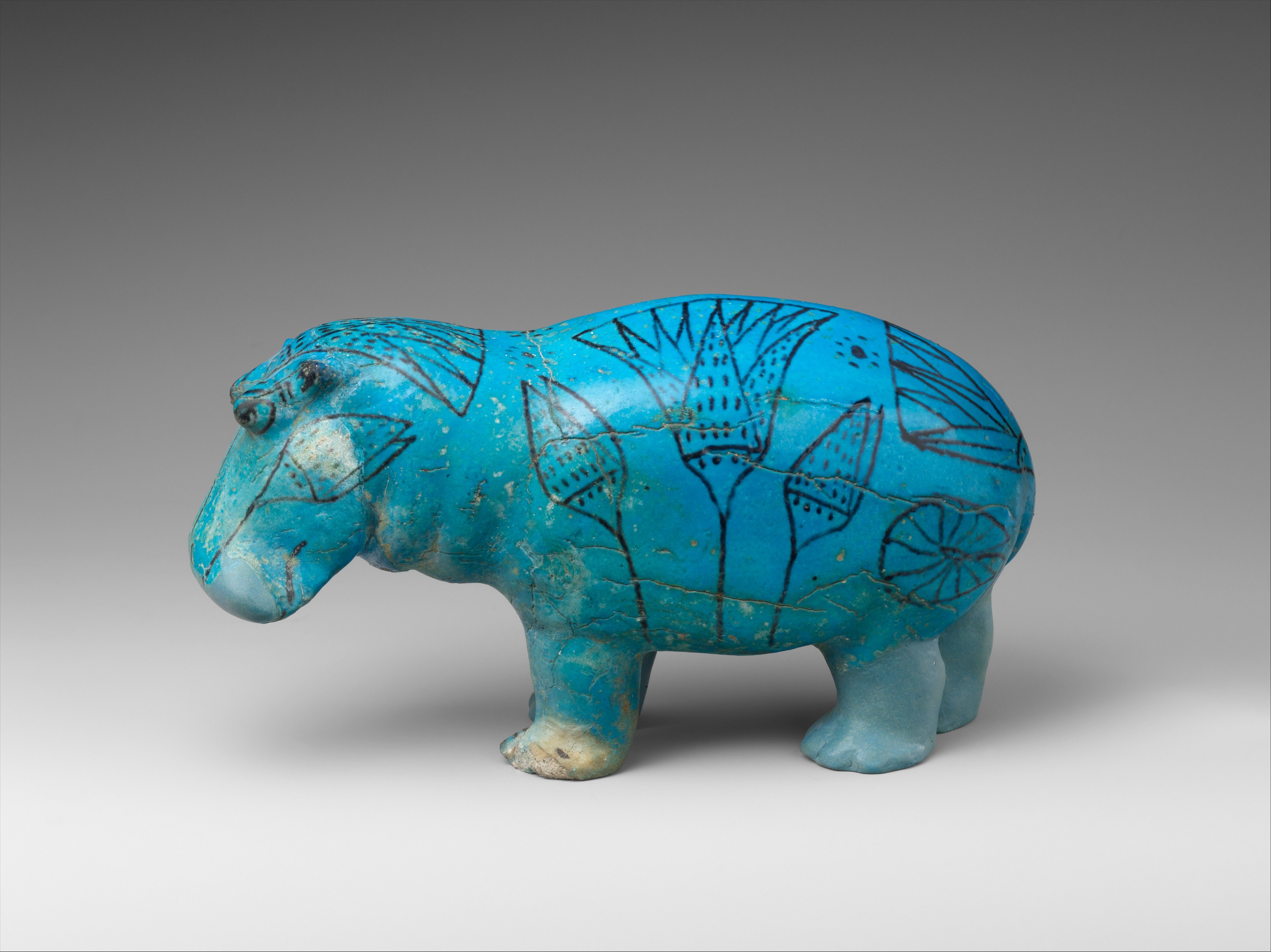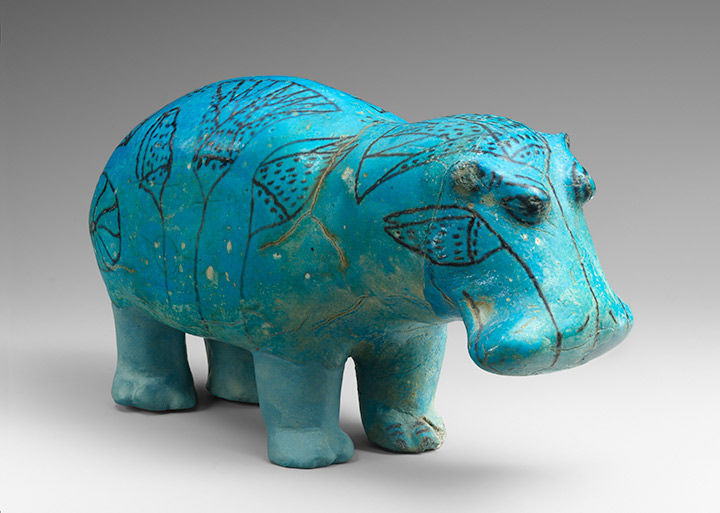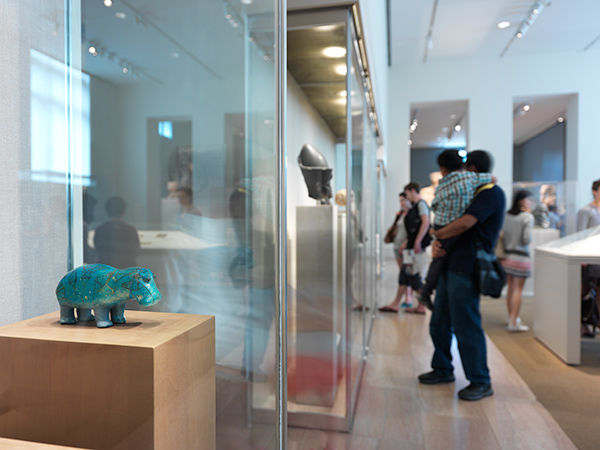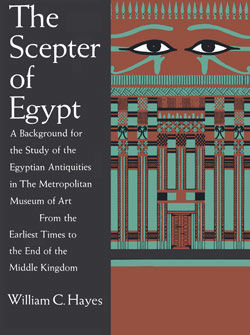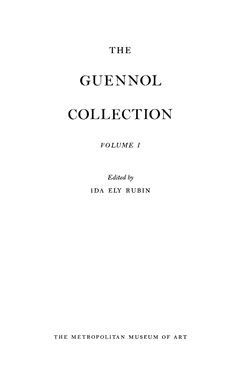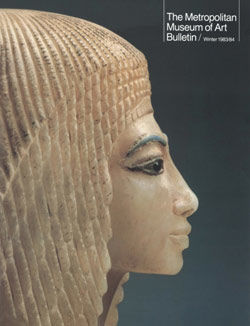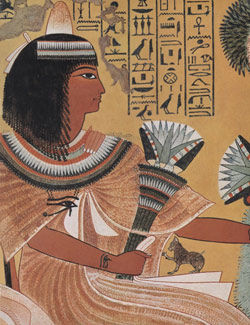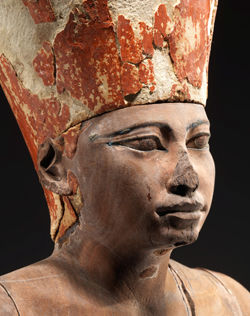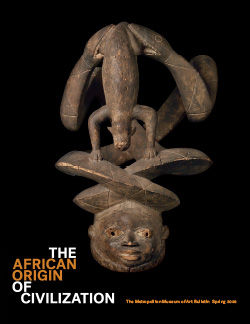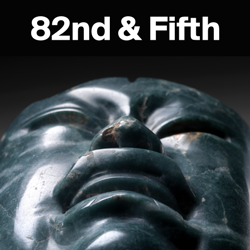Hippopotamus ("William")
Middle Kingdom
This statuette of a hippopotamus (popularly called "William") was molded in faience, a ceramic material made of ground quartz. Beneath the blue glaze, the body was painted with lotuses. These river plants depict the marshes in which the animal lived, but at the same time their flowers also symbolize regeneration and rebirth as they close every night and open again in the morning.
The seemingly benign appearance that this figurine presents is deceptive. To the ancient Egyptians, the hippopotamus was one of the most dangerous animals in their world. The huge creatures were a hazard for small fishing boats and other rivercraft. The beast might also be encountered on the waterways in the journey to the afterlife. As such, the hippopotamus was a force of nature that needed to be propitiated and controlled, both in this life and the next. This example was one of a pair found in a shaft associated with the tomb chapel of the steward Senbi II at Meir, an Upper Egyptian site about thirty miles south of modern Asyut. Three of its legs have been restored because they were probably purposely broken to prevent the creature from harming the deceased. The hippo was part of Senbi's burial equipment, which included a canopic box (also in the Metropolitan Museum), a coffin, and numerous models of boats and food production.
The hippo's modern nickname first appeared in 1931 in a story that was published in the British humor magazine Punch. It reports about a family that consults a color print of the Met’s hippo—which it calls "William"—as an oracle. The Met republished the story the same year in the Museum’s Bulletin, and the name William caught on!
#3355. Hippopotamus
Due to rights restrictions, this image cannot be enlarged, viewed at full screen, or downloaded.
This artwork is meant to be viewed from right to left. Scroll left to view more.


